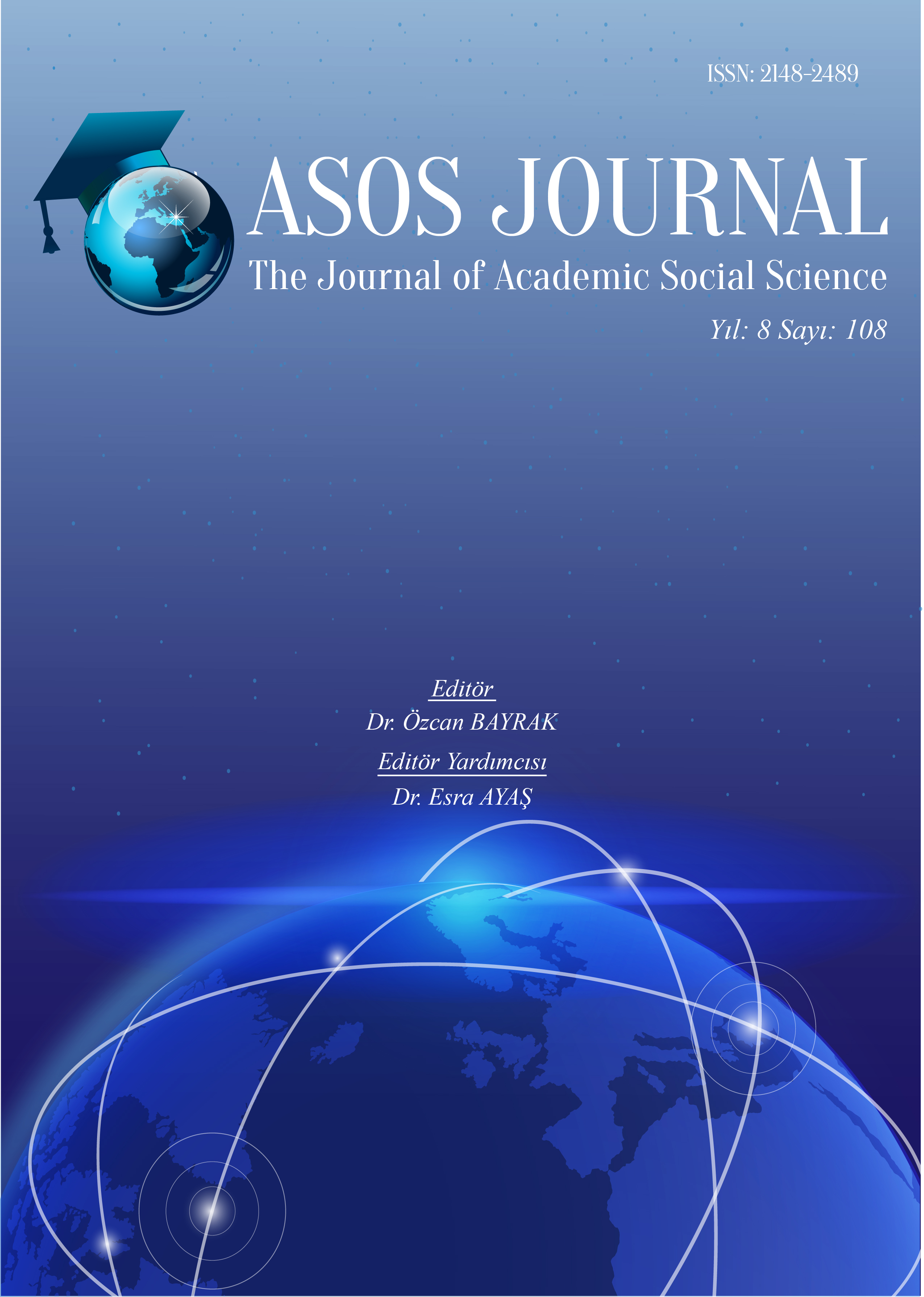Author :
Abstract
Bu çalışma, İngilizce dilbilgisi öğretiminde karikatürlerin rol aldığı ders etkinliklerinin Samsun’da bir ortaokuldaki 8. sınıf öğrencilerinin İngilizce dilbilgisi öğrenmelerine ilişkin etkisini araştırmak amacıyla yapılmıştır. Bu araştırma için 8. sınıfların iki grubunda olan toplam 29 öğrenci seçilmiştir. Araştırmaya katılan öğrencilerin belirlenen gramer konularıyla ilgili bilgilerini ölçmek amacıyla her iki gruba da ön test uygulanmıştır. Çalışmada deney ve kontrol gruplu öntest-sontest modeli kullanılmıştır. Öğretim süreci sonrasında her iki gruba son test uygulanmış ve bu testlerin analizinde IBM SPSS İstatistik 22 paket programı kullanılmıştır. 10 hafta süren öğretim etkinliği boyunca, on farklı gramer konusu dersin gerek sunum gerekse alıştırma aşamalarında kullanılan karikatürlerin olduğu ders etkinlikleri 8A sınıfına uygulanmıştır. Öğretim süreci sonunda uygulanan son test sonuçları, İngilizce derslerinde dilbilgisi öğretiminde karikatürlerin kullanımının, deney grubundaki öğrencilerin başarısında etkili olduğunu göstermiştir.
Keywords
Abstract
This study was conducted in order to investigate the effects of lesson activities including cartoons in teaching of grammar on 8th grade students’ learning English grammar. For this study, twenty nine students in two groups of 8th grade classes in a secondary school in Samsun were chosen. In the study, a pretest-posttest model with control and experiment groups has been used. To define the current knowledge of the students in both groups, a pre–test was applied to both groups. After the teaching period , a post-test was applied to both group and in order to analyse the findings, IBM SPSS Statistics 22 software programme was used. During the 10 week teaching process, ten different grammar subjects were taught the students in the group chosen as the experiment group through the cartoons prepared for the presentation or/and practice sections of the lesson. The results of the post-test, which was administered at the end of the instructon period, have revealed that using cartoons in grammar teaching had a positive effect on the achievement of the students in the expreiment group.
Keywords
- Aboudan, Rima, (2009), “ Laugh and Learn: Humor and Learning a Second Language Learning”, International Journal of Arts and Science, Volume 3/3, p. 90-99.
- Afrilyasanti, Rida, (2011), “Adapting Comics and Cartoons to Develop 21st Century Learners”, Language in India, Volume 11, p. 552-568.
- Debata, Pradeep Kumar, (2013), “The Importance of Grammar in English Language Teaching: A Reassessment”, Language in India, Volume 13/5, p. 482-486.
- Deniere, Marc, (1995), “Humor in Foreign Language Teaching”, Humor. International Journal of Humor Research, Volume 8/3, p. 285-298.
- Er, Gülay, (2017), “The Use of Humour in Foreign Language Educational Context”, 1st International Black Sea Conferences on Language and Language Education, 22-23 September, p. 647– 657, Samsun.
- Gardner, Sheena, (2008), “Changing approaches to teaching grammar”, English Language Teacher Education and Development, Volume 11, p. 39-44.
- Gınman, Mariam; Ungern-Sternberg, Sara von, (2003), “Cartoons as information”, Journal of Information Science, Voulme 29/1, p. 69-77.
- Güven, Sevim; Bektaş, Müjgan (2018), “The Effect Of Using Caricatures On Vocabulary Retention In Foreign Language Teaching”, International Journal Of Eurasia Social Sciences, Volume 9, p. 622-647.
- Hedge, Tricia. (2000). Teaching and learning in the Language Classroom. Oxford University Press, Oxford.
- Holmes, Janet; Marra, Meredith, (2002), “ Having a laugh at work: how humour contributes to workplace culture”, Journal of Pragmatics, Volume 34, p. 1683-1710.
- Krashen, Stephen, (1982), Principies and Practice in Second Language Acquisition. Pergamon
- Naylor, Stuart; Keogh, Brenda, (2013), “Concept Cartoons: What Have We Learnt? Journal of Turkish Science Education, Volume 10/1, p. 3-11.
- Nunan, David, (2003), Practical English Language Teaching, MacGraw Hill, Boston.
- Olajoke, Akinkurolere Susan, (2013), “ Students’Perception on the Use of Humor in The Teaching of English as a Second Language in Nigeria”, International Educational Research, Volume 1/2, p. 65-73.
- Özer, Atilla, (2005), “ Karikatür, eğitimcinin yazı tahtası üzerindeki işini fazlasıyla kolaylaştırır”, Hürriyet Gösteri Sanat Edebiyat Dergisi, Volume 275, s. 72-74.
- Thornbury, Scott, (1999), How to Teach Grammar, Longman, Pearson Education, London.
- Twerefou, Ildiko Csajbok, (2011), “Humour in Foreign Language Teaching”, Practice and Theory in Systems of Education, Volume 6/4, p. 327-335.
- Widodo, Handoyo Puji, (2006), “Approaches and Procedures for Teaching Grammar”, English Teaching: Practice and Critique, Volume 5/1, p. 122-141.
